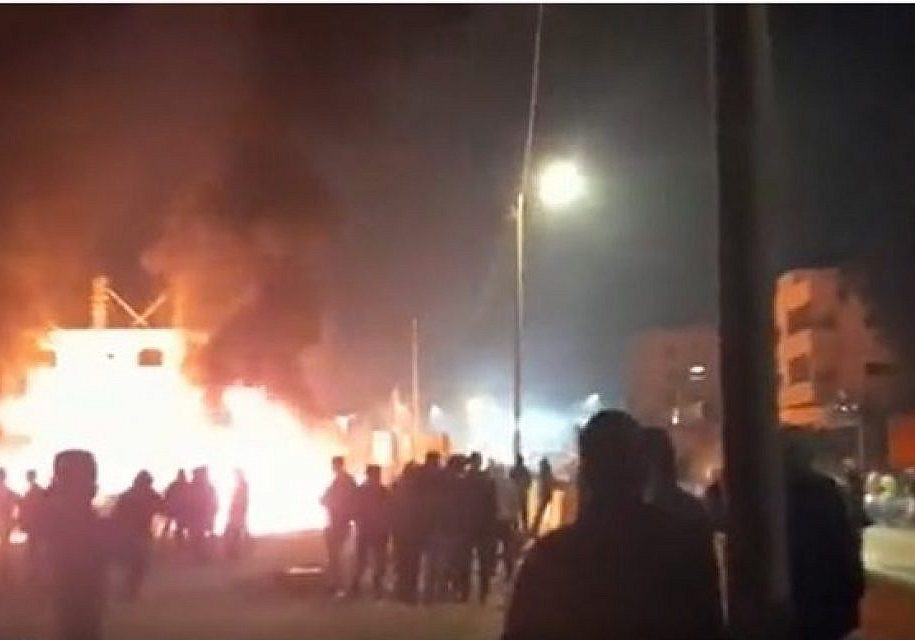FRESH AIR
Afghanistan’s ISKP remains primarily a regional threat for now
October 5, 2023 | Oved Lobel

In March 2023, US Central Command (CENTCOM) chief General Michael Kurilla testified to Congress that the Islamic State Khorasan Province (ISKP) in Afghanistan “can do an external operation against U.S. or Western interests abroad in under six months, with little to no warning.” He clarified later that he was referring to an “enabled attack where they’re providing funding and some direction,” rather than a directed attack involving command and control from Afghanistan.
General Kurilla further asserted that the Taliban “doesn’t have the intelligence and the precision to get after the real threats that we are seeing [from ISKP|… the Taliban doesn’t have the precision to go after the individuals; they will do large sweeping clearance operations. It can be disruptive to a point.”
Kurilla also explained that the Islamic State’s (IS) Al-Siddiq office in Afghanistan – which oversees operations for “Kazakhstan, Afghanistan, Pakistan, India, all the way down to Indonesia” – is the most prolific of all Islamic State offices today and that “we’ve disrupted a couple of threat streams.”
Similar warnings are contained in the latest US Defence Department Inspector General’s report on Afghanistan covering the period from January-March 2023, although the US Defence Intelligence Agency (DIA) estimate differed in its timeframe:
If prioritized by [ISKP], it would take at least 12 months for the group to carry out a strike against the United States or other Western nations… although [ISKP] and other ISIS affiliates in Afghanistan aspire to direct or enable an attack against the US homeland, [DIA] had no indication of a specific ISIS plot to attack the US homeland from Afghanistan… [ISKP] and ISIS affiliates in Afghanistan intend to conduct attacks against Western interests in Europe and likely use Turkey as a transit hub to move operatives and recruits and to disburse funds and weapons from Afghanistan to Europe…[ISKP] also attracts Central Asian recruits and supporters from Europe.
In April, a classified Pentagon assessment was leaked on Discord, along with a trove of other documents, which indicated that ISKP had been linked to 15 external plots by February 2023:
ISIS has been developing a cost-effective model for external operations that relies on resources from outside Afghanistan, operatives in target countries, and extensive facilitation networks. The model will likely enable ISIS to overcome obstacles — such as competent security services — and reduce some plot timelines, minimizing disruption opportunities.
However, it’s not clear how concrete the plots were, and a senior US defence official told the Washington Post, which reported on the leaks, “We see a lot of discussion and not a lot of action at this point.”
Meanwhile, the 14th report of the UN’s Analytical Support and Sanctions Monitoring Team, released in June, warned that ISKP had built at least five new training camps in 2022 and its “organizational structure has evolved from a hierarchical to a network-based system to boost its strength and fend off attacks as part of a five-year plan with short-term and long-term objectives.” The report further warned, “The group has created a network of sleeper cells in the centre of the country (Kabul, Kapisa and Parwan); elsewhere [ISKP] operate in cells of 5 to 15 people.”
Others in the analytical community have also been sounding the alarm, with a senior European counterterrorism official telling expert Charles Lister that the ISKP threat was “live”, “active”, and “immediate”.
Given this crescendo of warnings, is there any evidence that ISKP has actually become more dangerous since the Western withdrawal from Afghanistan, whether locally or internationally? The answer two years on appears to be no.
Under the assumption that the loss of US intelligence networks, air force, special forces and Afghan allies following withdrawal would create space for the group to thrive – and based on all the information and trends visible at the time – I was confident about ISKP’s prospects as both a serious territorial threat to the Taliban as well as a global terrorist threat.
For approximately a year, that analysis seemed to hold up, with daily attacks and assassinations against the Taliban as well as mass casualty attacks against civilians, primarily Hazara Shia. There were even reports of “no-go zones” for the Taliban, where ISKP allegedly exercised virtual territorial control in some areas.
Then US Under Secretary of Defence for Policy Colin Kahl testified to Congress in October 2021 that, “We could see [ISKP] generate that capability [for foreign attacks] in somewhere between six or 12 months”, while the then UN Secretary-General’s Special Representative for Afghanistan Deborah Lyons told the UN Security Council, “Once limited to a few provinces and the capital, ISKP now seems to be present in nearly all provinces, and increasingly active.” Then CENTCOM commander General Frank McKenzie also testified in March 2022 that the ISKP threat was growing.
Over 2023, however, the lethal activity of ISKP has dropped precipitously, particularly in Afghanistan, with longer and longer periods between attacks. While it still conducts mass casualty attacks and assassinations, including likely being behind twin suicide bombings in two Pakistani mosques on Sept. 29, the group has long since ceased to top the list of global IS provinces in attacks and lethality. Once described as IS’ most powerful and dangerous province, it has become almost quiescent, with desultory assassinations and attacks and the occasional mosque bombing punctuating months of inactivity.
While part of this reduced activity may be tactical and temporary – a result of the “five-year plan” mentioned in the UN report – it seems clear the Taliban’s ruthless scorched earth campaign against the group, of which I wrote dismissively in late 2021, is bearing fruit.
In terms of ISKP’s capacity to attack the West, in the only reported case of Western arrests in 2023 linked to the group, prosecutors in Germany and the Netherlands said, “There was no concrete plan for an attack at the time of today’s arrest.”
Lt. Gen. Alexus Grynkewich, commander of U.S. Air Forces Central, also recently indicated ISKP was currently a regional threat:
It is likely that [ISKP] has the desire, and in some cases, the capability to do external operations. We’ve seen some of that regionally. I don’t think there’s a threat beyond the region right now. But [ISKP] certainly has aspirations to go farther. They’re likely one of the most capable elements of ISIS right now and something that we need to keep a close eye on. We’ve got a good feel overall of what their capabilities are. But again, you always want more, right?
In addition to Taliban pressure, a US raid that killed Bilal al-Sudani, a senior IS official in Somalia responsible for funding ISKP, among others, also likely disrupted ISKP activities. It’s also possible information captured in that raid involved ISKP networks and was fed to the Taliban.
Furthermore, ISKP is likely also suffering from the constant decapitation of IS’ leadership in Syria, with the organisation’s fourth “Caliph” killed this year. Because IS is a single, centralised organisation – ISKP’s leader Sanaullah Ghafari (Shahab al-Muhajir) worked for IS central in Syria and Iraq until being appointed emir of ISKP by the leadership in 2020 – blows to the centre impact all the provinces. Kurilla likened the relationship between IS central and its global provinces and offices to that between the US Department of Defence and its “regional combatant commands” like CENTCOM.
The decline in ISKP attacks mirrors the steep reduction in IS attacks in Iraq and Syria. Major General Matthew McFarlane, the commanding general of the Combined Joint Task Force – Operation Inherent Resolve, asserted during a briefing in August:
We continue to see a decrease in [Islamic State] attacks year over year; this year, over 65 percent or greater from last year. This last Ramadan was the most peaceful Ramadan in recent history…So they continue to degrade not just in attacks tracking, but all measurable categories that I am aware of…from finances, military, and just numbers.
As expert Joel Wing pointed out, this year is the first time since 2003 that IS has failed to launch a Ramadan offensive.
The current trend of relative quiescence for ISKP and IS central, at least compared to previous years, is contingent on sustainable and concerted Taliban pressure in the former case and a continued US military presence in Iraq and Syria in the latter. IS remains very active in Syria, while the long-term trends for ISKP seem conducive to its revival and growth and its propaganda apparatus remains extremely active.
It may well be that my 2021 assessments on ISKP’s future will eventually turn out to be correct. Yet for now, just over two years since the US withdrawal, the Taliban crackdown is mostly keeping the group in check and there still seem to be enough intelligence sources in and around Afghanistan to disrupt any plots – if any concrete plots, as opposed to aspirations, even exist – directed at the West.
RELATED ARTICLES

‘Time’s up for talk’: Joel Burnie discusses Antisemitism Envoy’s report on Sky News

‘Optimism’ for Hamas to ‘exile’ their power and create a permanent ceasefire with Israel: Joel Burnie on Sky News

Australian government’s response to Iran-Israel conflict ‘disappointing’: Paul Rubenstein on Sky News




















